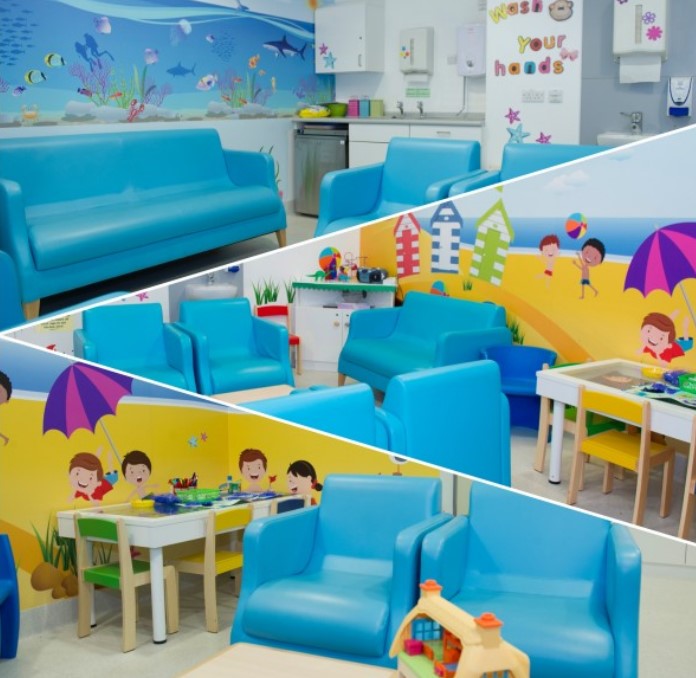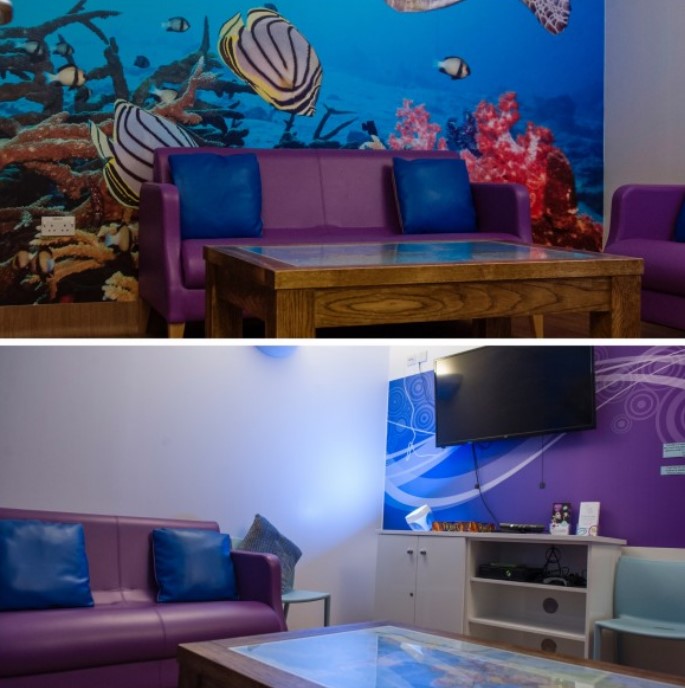On this page
The Leeds Cancer Centre provides a dedicated personalised children’s and young people’s radiotherapy service. Our specialised staff provide an individualised treatment pathway, that caters for your child’s requirements.
We work closely with the staff at the LGI, St James’s and other hospitals to provide a bespoke children’s and adolescent radiotherapy service.
What is radiotherapy?
Radiotherapy is the use of carefully controlled (high energy) X-rays, to treat cancer. It can be given as a single session or as multiple sessions depending on the type of cancer you have. The organs and tissues of the body are made up of tiny building blocks called cells. The treatment is given in such a way that the X-rays destroy cancer cells while doing as little harm as possible to normal cells.
The course of radiotherapy can range from a single treatment to multiple treatments over a period of several weeks. Each radiotherapy treatment is planned for your child’s cancer and no two patient’s treatments are the same.
We will explain everything to you and your child. Children and young people will be given appropriate information and explanations according to their age and understanding.
Find us
The children’s and young people’s radiotherapy department can be found on level B-2 in Bexley Wing, St James’s Hospital.
If you are travelling by car or hospital transport take the red or green lift from the atrium entrance on Level 0. There is also an entrance directly to Level -2 from Beckett Street for those travelling by public transport. There is a regular bus service from the city centre which stops just outside the door.
Contact us
For appointments and general queries call 0113 206 7810 (paediatric radiotherapy department).
Coming for children’s radiotherapy
Planning your child’s radiotherapy
Each person’s radiotherapy treatment is designed for them. No two people’s treatment is the same. In order for us to plan your child’s radiotherapy, they will need a planning scan.
We use a Computerised Tomography (CT) scanner to take pictures of your child’s body which allow us to see the cancer and plan their radiotherapy treatment.
The radiographers will draw some marks onto your child’s skin, to be used as a reference for their treatment. The marks do not show us where the cancer is, they help us make sure that your child is in the same place every time for their treatment. At the end of the scan these marks will be replaced by permanent marks. These marks are no bigger than a freckle and will be used each day for their treatment. The number of tattoos depends on the area of their body we are treating. It ranges from one to four. These permanent marks help us to reproduce their treatment with accuracy each day.
After your child has had their planning CT radiotherapy scan, the doctors will draw on their images to show where they want to give the highest radiation dose to the tumour. The number of radiation beams needed can vary. The doctors check the plans to ensure that the radiation beams cover the area needed.
Staff in the treatment planning department use state of the art computers to generate an individual radiotherapy treatment plan. This may take several hours or even several days. The technologists ensure that the dose goes to the tumour. They ensure that as low a dose as possible goes through the normal tissues. Each radiotherapy treatment is very carefully checked before it is prescribed. and before it is sent to the treatment machine. When the prescription is received on the radiotherapy machine, an additional set of checks are made by the radiographers.
Treatment
Radiotherapy treatment is normally given as an outpatient appointment and your child will not have to stay in the hospital overnight. Appointments are normally in the morning and you may have to be in the department for a couple of hours. The radiotherapy team will let you know when you need to arrive at the department and roughly how long you will be with us. Everybody’s treatment is different and can be anything from one treatment to multiple treatments given over a period of weeks. Your child’s doctor will tell you how many treatments they will need.
Radiotherapy treatments are not painful. The machine makes a ‘buzzing’ noise when it is delivering the radiotherapy. The radiographers can see and hear your child at all times via a CCTV system. The images are a live feed from the radiotherapy room and are not recorded. The radiographers can talk to your child whilst they are having their treatments. We have a radio and CD player in the treatment room so we can play music if your child would like. Please bring a favourite CD if you want. We also have an iPad which we can use to play videos to your child whilst they are having their treatment. Sometimes this is not possible due to the movement of the radiotherapy machine as it gets in the way. Our team will let you know if watching a video is possible for your child.
Your child will need to lie on the radiotherapy machine and stay very still for the radiotherapy treatment. Each treatment normally takes less than 20 minutes. If your child can not stay still for their treatment, they will need to have a general anaesthetic. The anaesthetic is ‘light’ and your child will recover quickly from it allowing you to return home after the treatment. If your child is going to have a general anaesthetic, our team will give you detailed instructions about eating and drinking before their appointment.
If your child has had a general anaesthetic for their treatment please bring a snack and a drink for them to eat after they have woken up as they will be hungry. Bring something that they would love to eat and drink; it will have been a few hours since their last meal.
Dedicated children’s and young people’s facilities
The radiotherapy department at Leeds has a dedicated children’s and young people’s area situated within the main radiotherapy department. These allow children and young people to have their own waiting areas away from the adult areas. The customised unit provides an area where children and young people can prepare and wait for their treatment.
Children’s play room
The brightly coloured play room is full of toys and activities for children to use whilst waiting for their appointment. Here we also have our ‘baby linac’, a replica of our treatment machines, that children can play with so they can become familiar with our machinery.
Parents can also wait here whilst their child is having their treatment. We have coffee and tea making facilities available for parents.

The teenage chill out room
Opposite the children’s play room we have a relaxing chill out room, where young people can sit whilst waiting for their appointment. This is also separate from the adult waiting area. The room has low level lighting and computer games, which young people can use either before or after their treatments.
